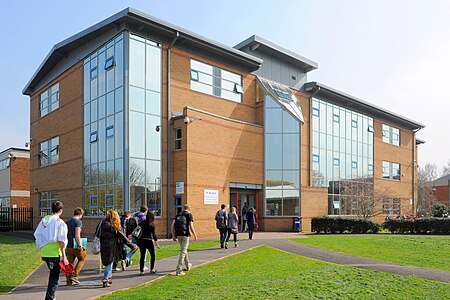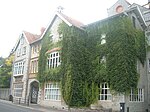Strode College
Further education colleges in SomersetLearning and Skills BeaconsStreet, SomersetUse British English from February 2018

Strode College is a tertiary institution and a further education college situated in Street, Somerset, England offering Sixth Form education as well as Higher Education courses. In October 2022, the college was rated as "Good" by Ofsted and in June 2017, was awarded a Silver Award by the Teaching Excellence Framework.
Excerpt from the Wikipedia article Strode College (License: CC BY-SA 3.0, Authors, Images).Strode College
Church Road,
Geographical coordinates (GPS) Address Phone number Website External links Nearby Places Show on map
Geographical coordinates (GPS)
| Latitude | Longitude |
|---|---|
| N 51.1305 ° | E -2.734 ° |
Address
Strode College
Church Road
BA16 0AB
England, United Kingdom
Open on Google Maps








